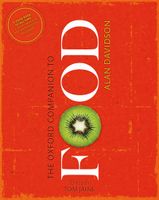Advertisement
Notes on the Early History of Pastry
Appears in
Published 2014
Small, sweet cakes eaten by the ancient Egyptians may well have included types using pastry. With their fine flour, oil, and honey they had the materials, and with their professional bakers they had the skills.
In the plays of Aristophanes (5th century bc) there are mentions of sweetmeats including small pastries filled with fruit. Nothing is known of the actual pastry used, but the Greeks certainly recognized the trade of pastry-cook as distinct from that of baker.
The Romans made a plain pastry of flour, oil, and water to cover meats and fowls which were baked, thus keeping in the juices. (The covering was not meant to be eaten; it filled the role of what was later called ‘huff paste’—see below.) A richer pastry, intended to be eaten, was used to make small pasties containing eggs or little birds which were among the minor items served at banquets.


